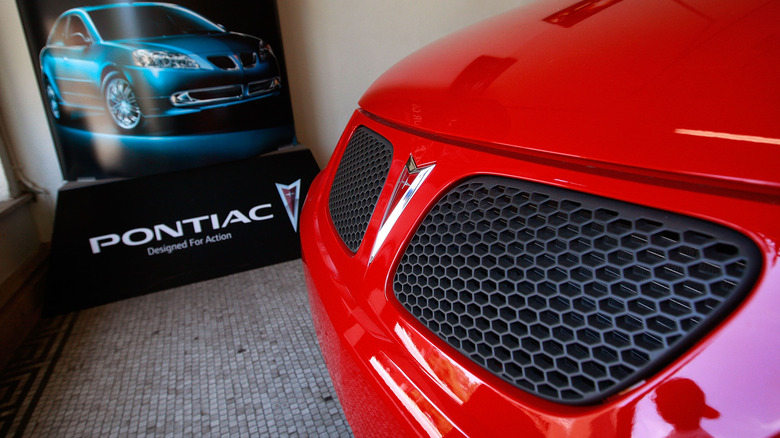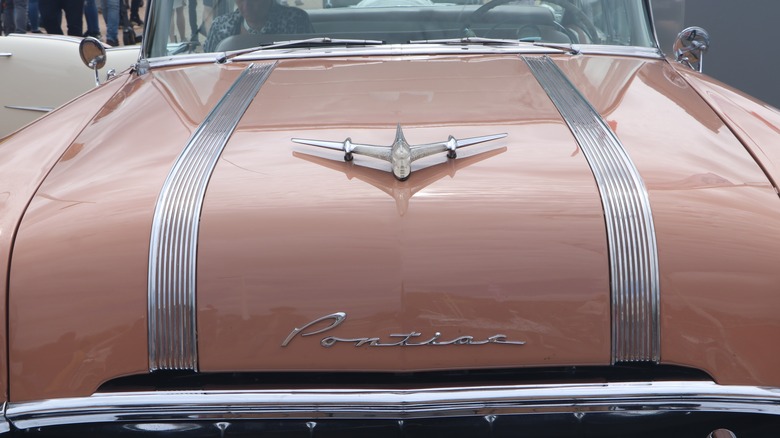The Forgotten Pontiac Concept Car Had A Big Feature Similar To The Mazda RX-8
Before going belly-up in 2010, Pontiac made several attempts to revive its faltering brand. Some had potential, others were heinous. However, nothing the company did ever lacked for originality. Indeed, a few ideas even proved welcome innovations in the marketplace, but they arrived a little too early to save the beleaguered marque.
SlashGear has a particular fondness for the gloriously odd flourishes of Pontiac's latter days. With a few different decisions, the Pontiac Fiero could have been a blue-chip mid-engine masterpiece needed to challenge the mighty Corvette, and its curious immortality in the hands of modders is inspiring. The Pursuit also showed genuine next-wave thinking, coming stock with streamlined bodywork and a digital driver display all the way back in 1987.
Another wild Pontiac concept boasted big ideas with limited follow-through from 1997. At least one of those components would turn up in cars for decades to come, including the admired masterpiece that was the Mazda RX-8.
Pontiac goes loud
The concept in question was the Pontiac Rageous, an uncompromising American muscle car. Its signature design element was a classic bit of retrofuturism: two sets of stylish suicide doors. As reported by the Los Angeles Times, suicide doors — asymmetric doors hung nose-to-nose with no metal pillar between — thrived as a design choice from the 1930s all the way to the 70s but eventually fell out thanks to safety concerns. As the Times notes, suicide doors enjoyed a resurgence in the mid to late 2000s among cars like the Honda Element, Mazda RX-8m and the Toyota FJ Cruiser but under different monikers.
Alas, in true Pontiac fashion the Rageous arrived at the party nearly a decade too early. Per Motor1, it debuted at the 1997 North American International Auto Show. Pontiac had built a stunner, a V8 beast with hatchback utility. Even the front seats folded down! In short, Pontiac had made a valiant attempt at an all-American hot hatch.
The American market, however, simply shrugged and moved on. The Rageous couldn't compete at the time with fast, inexpensive, relentlessly reliable entry-level sport hatchbacks available from Japan, Germany, and elsewhere. Ten years later, when the marketplace had finally caught on to the Rageous's signature doors, Pontiac was on its way out.

